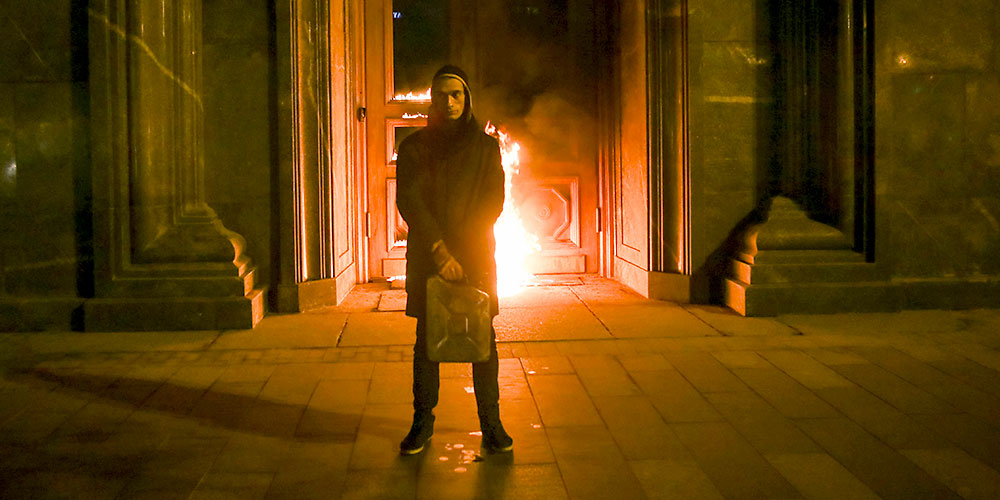Visible body, invisible power
Text: Gerald Wildgruber
Russian artist Pyotr Pavlensky openly declares that his work is intended to be political. In his startling performances, he uses his body in extreme ways.
Applied to the world of political art, Paul Klee’s famous dictum that “Art does not reproduce the visible but makes visible” finds its epitome in the work of Pyotr Pavlensky. The inner workings of a country’s government are not something that is readily perceived. They are, in the terms of historian Ernst Kantorowicz, arcana imperii, or state secrets. Looked at from this point of view, the state as a whole acts as a kind of secret service, having superseded the church in the role of keeper of secrets. That which is hidden from the public is crucial to the power of the state. Pavlensky’s political art deals with these arcana of power, zeroing in on what might be viewed as the iconostases of the state.
His performances use color, light, sound and words only indirectly; their true substance is the very representatives of state power that political art in public spaces provokes into action: the police, medical and psychiatric institutions and the judiciary. These are all manifestations of what Michel Foucault called biopower, a power that supervises all aspects of people’s lives. Images produced by them, for example surveillance camera footage, are incorporated into the artistic process. The state’s authorities are thus transformed into genuinely artistic executive organs; they become, as Pavlensky puts it, “means of execution and help create an image.”
The purpose of Pavlensky’s political art is to issue a challenge. This calls for acumen and prudence rather than sacrifice: “The artist is never a hero, because a ’hero’ is someone who is offered up by society in sacrifice to the voracity of power,” says Pavlensky. Unlike a martyr, an artist who has been neutralized is of no use to anyone. In this context, virtuosity, a familiar concept in art theory, can be redefined as the ability to challenge power in a calculated way, or the art of confronting an overwhelming adversary and avoiding annihilation.
There is always considerable danger involved, which in Pavlensky’s case means the risk of being imprisoned or forcibly committed to a mental hospital. Being a virtuoso artist, however, he knows exactly where and how to intrude into the machinery of state authorities so as to maneuver them into the precarious equilibrium of a deadlock, thus creating a momentary tableau vivant of power.
Pavlensky’s performances have become known for their high degree of self-harm. In purely functional terms, they are a reliable way of summoning state power from behind the scenes. Inflicting violence on oneself challenges biopower’s capacity to control life. However, in this conflict, the human body is a representative of finiteness and moderation. In popular culture, the body is typically thought of as a means of transgression, a foil for devotion and asceticism. In Pavlensky’s art, by contrast, the human body with all its limitations confronts a system of power which, according to him, is itself characterized by the continual perpetuation of excess and irrationality. Ironically, the human body becomes an anchor point of sanity. It forms an obstacle to power and so makes it visible. In keeping with Dostoyevsky’s illuminating coinage of “administrative ecstasy,” Pavlensky has experienced the obsessive nature of state power. His objective is therefore to render its “bureaucratic lunacy” irrelevant.
In December 2016, after a series of criminal trials which resulted in fines and prison sentences, Pyotr Pavlensky and Oksana Shalygina were charged with sexual assault. This prompted the couple to leave Russia with their two daughters and to seek political asylum in France. Their application is pending.
More articles in the current issue of UNI NOVA.

